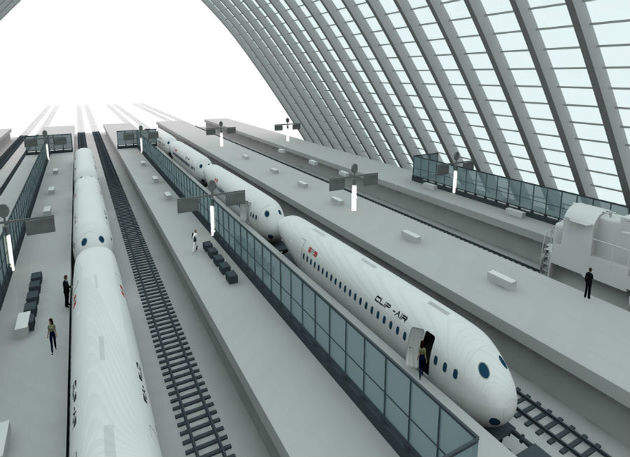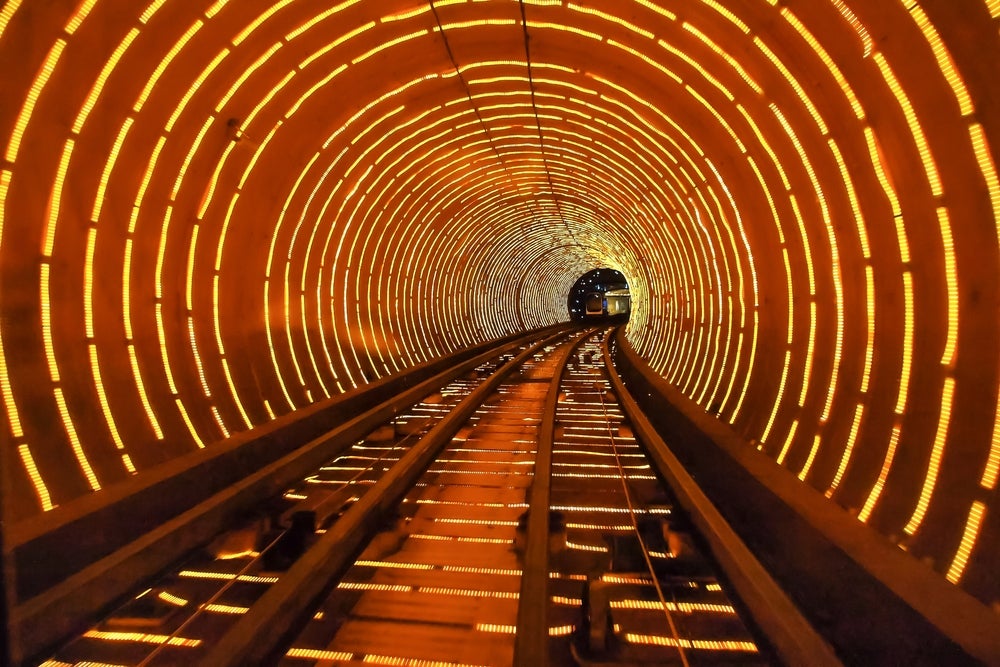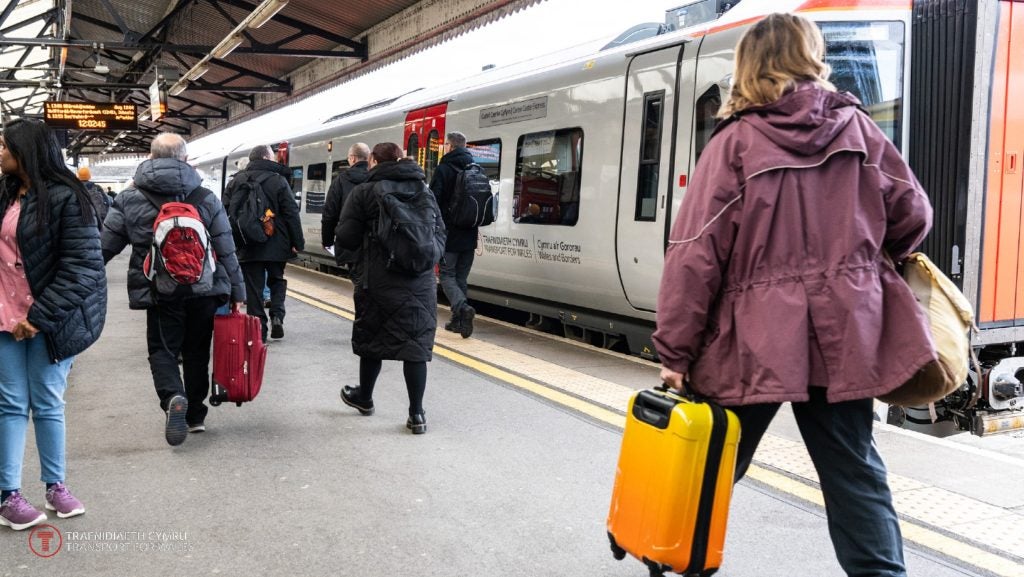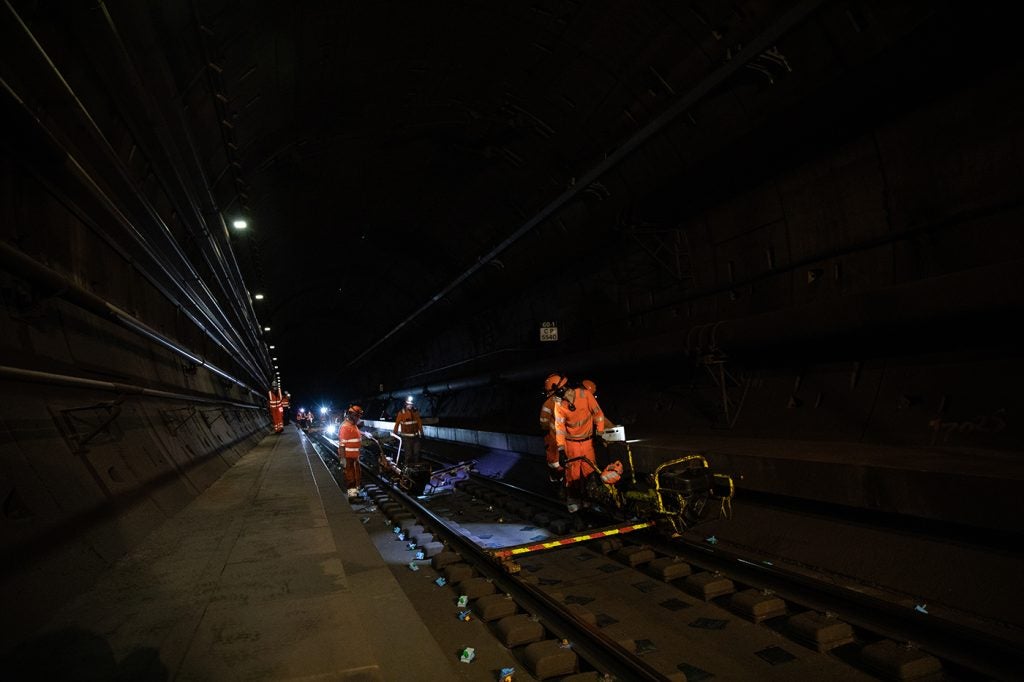

It sounds like something pulled directly from the pages of a sci-fi novel, but Clip-Air’s leftfield concept of having passengers and cargo switch between train and plane without even making a transfer, is being actively pursued, as developers attempt to define the next era of multi-modal transport.
Before travellers get too excited, Clip-Air is very much for the distant future. “The inspiration for the project is primarily an exploration and [creating] a vision of our future, to seek the potential of existing technologies and imagine a very different transport concept,” says Claudio Leonardi, Clip-Air project manager. “[We want to] identify solutions to our problems of transport, energy and safety.”
The project takes inspiration from the Beeplane, a concept that also has a detachable fuselage, and the Fairchild XC-120 experiment from the 1950s, which again used removable cargo pods.
Clip-Air comes out of the Transportation Centre at Switzerland's Federal Polytechnic Institute of Lausanne (EPFL), and is not so much a “novelty”, says Leonardi, but more a continuation of previous revolutions in transport. To no great surprise, “we have noticed a lot of curiosity and interest”, he adds. Leonardi and his team are thinking big, but how would Clip-Air work?
See Also:
Are detachable capsules the future?
Defined by the project team as 'rail transport's flexibility in air transport’ making airports reach all the way into railway stations, Clip-Air envisions an aircraft that can carry mobile and interchangeable capsules. The official website describes it as: “On the one hand, the Clip-Air plane is made up of a support structure including wings, engines, fuel and a cockpit. On the other hand, there is the load to be transported: passengers and freight.”
How well do you really know your competitors?
Access the most comprehensive Company Profiles on the market, powered by GlobalData. Save hours of research. Gain competitive edge.

Thank you!
Your download email will arrive shortly
Not ready to buy yet? Download a free sample
We are confident about the unique quality of our Company Profiles. However, we want you to make the most beneficial decision for your business, so we offer a free sample that you can download by submitting the below form
By GlobalDataThe combination of these two elements – the wing and capsules – gives it “extraordinary flexibility”, says Leonardi. The capsules, similar to a conventional aircraft’s fuselage, would not include a cockpit or landing gear, but rather extra space for whatever they are carrying. The current design suggests that each aircraft could transport three capsules.
“There are several possible types of capsules we could use,” explains Leonardi. “The capsules being studied now are [similar] to an A320 [aircraft], of which the total load is 30t. Later, we will orient our views on smaller capsules of 100 passengers.” But, he adds, “passengers would not see a big difference”.
Clip-Air is keen to outline how these capsules could be changed to fit the needs of those travelling. There might be one first class capsule, one economy class, or one just for freight, for example. The aim is to have a total of 450 passengers on board, including on the rail journey.
“The benefits are strongly linked to the modularity of the project,” says Leonardi. “It gives a glimpse of the potential of modularity.”
Potential is the key word here. As Leonardi puts it, “We cannot build a prototype without going through four to five years of research and development.” In addition, the idea of using three capsules could take as long as 40 to 50 years to realise, so for now it is research, research and more research. “We must begin by using a smaller aircraft, such as private planes or business aircraft, and then the experience and the know-how will pave the road [forward],” he adds.
Changing the rail infrastructure
That’s only one element of Clip-Air, however. The modularity that Leonardi speaks of is really the heartbeat of the project, and as such it requires a great deal of attention on how a plane journey could seamlessly morph into a rail journey.
That, among other things, could be one of the biggest obstacles. “We have imagined a railway station with very similar boarding systems to those at an airport, with a secure area for passengers,” explains Leonardi.
No doubt such infrastructure would require a huge amount of work, again demonstrating the necessity of such a long timeframe. It also requires a desire from the transport networks of the future to adopt a multi-modal first approach, moving away from the traditional separation of each leg of a journey. It does not take a lot of imagination to see that – at least in the beginning – such a radical change would come with a hefty price tag.
Later this year, further work will begin on the freight rail portion to get cargo capsules on railway platforms, and Leonardi is hopeful that the team will be able to conduct greater research on the design of a new rail carriage. Leonardi clarifies, however, that “this will [only] be a draft, because the road is long”.
That sentence can be used as the definition of where Leonardi and his team are with Clip-Air. There’s plenty of enthusiasm, but the revolution that they are trying to bring about will, as technology advances, perhaps look different to what is expected in 2016.
“As for our project,” Leonardi continues, “it could start without having to change everything, because of its flexibility, which could open the way for a significant change. Look at the history of the container, [which has] changed everything in world trade, but it remains discreet.”
Back to the original question: is the world ready for such a concept, or is this idea a few decades ahead of its time? Clip-Air’s timeline suggests the latter, but by laying the groundwork now, future generations will be able to revel in the benefits of multi-modal transport.







